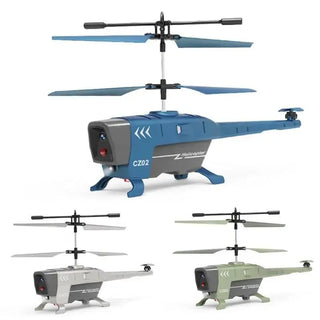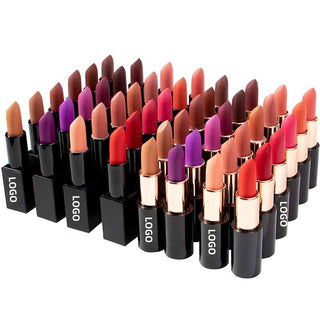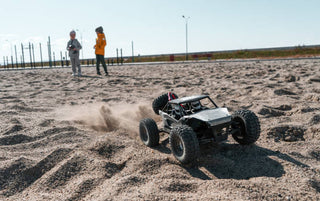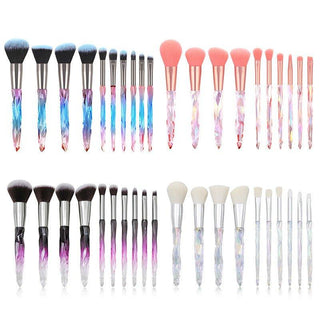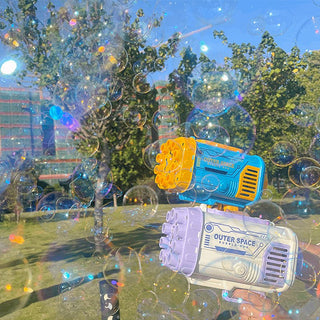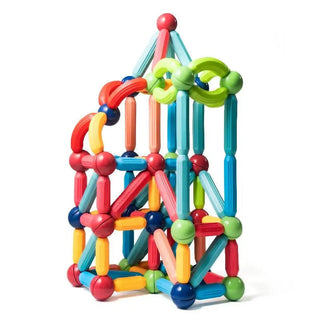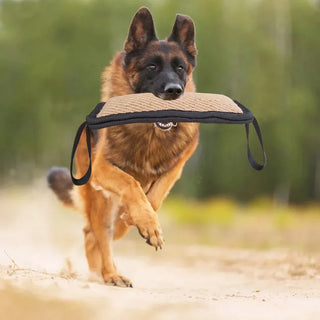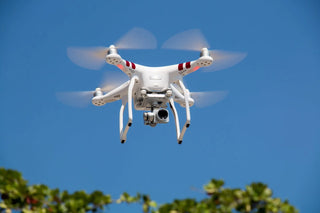Farming is changing a lot, and one big reason for that is drones. These flying tools are becoming super important for farmers all over the world. They help with so many things, from checking on crops to managing animals. Basically, farming and drones together are making things more exact and efficient. This article will look at how drones are changing farming for the better, helping us grow food in a smarter, more Earth-friendly way.
Key Takeaways
- Farming and drones are making agriculture more precise and efficient.
- Drones help farmers make better choices by collecting real-time information.
- Using drones can lead to less waste and better use of resources.
- There are still some hurdles to using drones, like rules and how much they cost.
- The future looks bright for farming and drones, with new tech like AI making them even more useful.
The Transformative Impact of Farming and Drones
Revolutionizing Agricultural Practices
Farming is changing, and drones are a big part of it. They're not just cool gadgets; they're tools that can seriously shake up how things are done. Drones are helping to make agriculture more efficient and sustainable. Think about it: instead of blanket spraying an entire field, you can use a drone to target only the areas that need attention. This saves resources and reduces waste. It's a pretty big deal for the future of food production.
Enhancing Efficiency and Precision
Drones bring a level of detail to farming that wasn't possible before. They can fly over fields and collect data on crop health, soil conditions, and even pest infestations. This information helps farmers make better decisions about when to irrigate, fertilize, or apply pesticides. It's all about getting the right treatment to the right place at the right time. This precision spraying approach not only saves money but also minimizes the impact on the environment.
Driving Sustainable Farming Solutions
Sustainability is a huge buzzword these days, but it's also a real concern for farmers. Drones can help reduce the environmental impact of agriculture by optimizing resource use and minimizing waste. For example, drones equipped with sprayers can apply pesticides or fertilizers more evenly than traditional machinery. This reduces chemical runoff into surrounding ecosystems and prevents the over-application of harmful substances. Plus, by monitoring crop health, farmers can identify problems early and address them before they escalate, reducing the need for more drastic interventions. It's about creating a system that's both productive and environmentally responsible.
Drones are enabling more sustainable farming practices, reducing waste, and optimizing resource use. This is crucial for meeting the world's growing food demands while minimizing environmental impact. As we look to the future of agriculture, it's clear that drones will play a crucial role in shaping a more productive, sustainable, and technologically advanced farming landscape.
Here's a quick look at how drones can improve resource management:
- Reduced water usage through targeted irrigation.
- Minimized pesticide application with precision spraying.
- Optimized fertilizer use based on crop health data.
Key Applications of Farming and Drones in Agriculture

Optimizing Crop Health Monitoring
Drones are becoming essential for keeping an eye on crops. Equipped with special cameras, they can spot problems early, like stress or disease. This lets farmers act fast and prevent big losses. It's way more efficient than walking fields, and you get a much better overview. Early detection of crop stress can save entire harvests.
Advancing Precision Spraying Techniques
Forget blanket spraying! Drones can apply pesticides and fertilizers exactly where needed. This cuts down on waste and helps the environment. It's all about being precise. Here's a quick look at the benefits:
- Reduces chemical runoff.
- Saves money on materials.
- Protects beneficial insects.
Using drones for precision spraying is a game-changer. It's not just about saving money; it's about being responsible with resources and protecting the environment for future generations. This targeted approach reduces the overall chemical footprint of farming operations.
Streamlining Livestock Management
Drones aren't just for crops; they're helping with livestock too. Farmers can use them to check on herds, find injured animals, and manage pastures more effectively. This is especially useful for large farms where it's hard to get around. Livestock monitoring has become easier with drones, improving animal welfare and operational efficiency.
Integrating Farming and Drones for Data-Driven Decisions
Real-Time Data Collection and Analysis
Drones are changing how farmers gather information. Instead of walking fields or relying on satellite imagery, farmers can now use drones to get a detailed look at their crops in real-time. This means problems can be spotted early, before they cause major damage. Drones equipped with various sensors can collect data on plant health, soil conditions, and even water levels. This data is then analyzed to give farmers a clear picture of what's happening in their fields.
Improving Resource Utilization
With the data collected by drones, farmers can use resources more efficiently. For example, instead of applying fertilizer to an entire field, they can target only the areas that need it. This not only saves money but also reduces the environmental impact of farming. Drones can also help with irrigation, ensuring that water is used where it's needed most. This precision approach to resource management can lead to significant savings and a more sustainable farming operation. Here's a quick look at potential savings:
| Resource | Traditional Method | Drone-Based Method | Potential Savings |
|---|---|---|---|
| Fertilizer | 100 lbs/acre | 75 lbs/acre | 25% |
| Water | 10 inches/acre | 7 inches/acre | 30% |
| Pesticides | 5 lbs/acre | 3 lbs/acre | 40% |
Maximizing Yields Through Informed Choices
By combining real-time data with smart analysis, farmers can make better decisions about their crops. This can lead to higher yields and a more profitable farming operation. Drones can help identify areas where crops are struggling, allowing farmers to take corrective action before it's too late. They can also help predict yields, allowing farmers to plan for harvest and marketing. Using agriculture technologies like drones, farming becomes less of a guessing game and more of a science.
Drones are not just about collecting data; they're about turning that data into actionable insights. This means farmers can make informed choices that lead to better outcomes, both for their bottom line and for the environment.
Overcoming Challenges in Drone Adoption for Farming
While drones bring a lot to the table, getting them fully integrated into farming isn't without its hurdles. It's not always a smooth flight, so to speak. Let's look at some of the main roadblocks and how to deal with them.
Navigating Regulatory Compliance
Dealing with drone regulations can be a real headache. Each country, and sometimes even regions within a country, has different rules about where you can fly, how high, and what you can do with the data you collect. It's a bit of a legal maze. You have to think about airspace restrictions, privacy issues, and all sorts of operational limits. Keeping up with these rules is a must, but it can take time and effort. It's important to stay informed about drone regulations to avoid fines or other issues.
Addressing Cost and Accessibility Barriers
Drones, especially the good ones with all the sensors and software, can be expensive. It's a big upfront investment, and it might take a while to see a return, especially for smaller farms or those in developing areas. Plus, it's not just the drone itself; you might need specialized software or services, which adds to the cost. Finding ways to make drones more affordable and accessible is key to getting them into the hands of more farmers.
Here's a quick look at potential costs:
| Item | Estimated Cost |
|---|---|
| Drone | $1,000 - $20,000 |
| Software | $500 - $5,000 |
| Training | $200 - $1,000 |
| Maintenance | $100 - $500/year |
Developing Technical Expertise and Training
Operating and maintaining drones isn't always easy. It takes some know-how. Many farmers are used to traditional methods, so learning to fly drones, manage the data, and troubleshoot problems can be a big leap. Training programs and support are important to bridge this gap. We need to make sure farmers have the skills they need to use drones effectively.
It's not just about buying a drone; it's about understanding how to use the data to make better decisions. This means investing in training and support to help farmers get the most out of this technology. It's a shift in mindset, but one that can pay off big time.
Here are some ways to improve drone adoption:
- Offer specialized training programs for farmers.
- Set up service centers for drone maintenance and support.
- Simplify the licensing procedure and regulatory requirements.
Future Innovations in Farming and Drones Technology
Advancements in AI and Machine Learning Integration
AI and machine learning are set to transform how we use drones in farming. Imagine drones that can not only collect data but also analyze it in real-time, making instant decisions about crop treatment or irrigation. These systems could spot patterns that humans might miss, leading to even better farming practices. It's like having a super-smart farming assistant in the sky.
Enhancing Battery Life and Flight Endurance
One of the biggest limitations of current drones is battery life. But that's changing fast. New battery technologies are constantly being developed, promising longer flight times and greater endurance. This means drones can cover larger areas and do more complex tasks without needing frequent recharges. Think about it: fewer interruptions, more data, and increased efficiency. Longer flight endurance will be a game changer.
Exploring Swarm Technology for Large-Scale Operations
Swarm technology, where multiple drones work together in a coordinated way, is another exciting area. Imagine a group of drones working together to plant seeds, spray crops, or monitor fields. This could dramatically reduce the time and effort needed for large-scale farming. It's like having a team of aerial robots working in perfect sync.
The future of farming isn't just about individual drones; it's about creating interconnected systems that can respond to changing conditions in real-time. This synergy between drones, AI, and other smart farming technologies promises to create highly automated and optimized agricultural systems.
Here's a quick look at how drone swarms could impact farming tasks:
| Task | Current Time | Swarm Time | Efficiency Gain |
|---|---|---|---|
| Crop Monitoring | 8 hours | 2 hours | 75% |
| Spraying | 12 hours | 3 hours | 75% |
| Planting | 16 hours | 4 hours | 75% |
Here are some of the benefits of using drone swarms:
- Faster task completion
- Reduced labor costs
- Improved data collection
- More efficient resource use
The Economic Benefits of Farming and Drones
Reducing Operational Costs
Using drones in farming can really cut down on costs. Think about it: instead of walking fields or using big, expensive equipment, a drone can do the same job faster and cheaper. This means less money spent on labor, fuel, and even things like pesticides and fertilizers.
- Reduced labor costs due to automated monitoring.
- Lower fuel consumption compared to traditional machinery.
- Optimized use of resources like water and fertilizers.
Increasing Farm Productivity
Drones aren't just about saving money; they also help farms produce more. By giving farmers a better view of their crops, drones allow them to spot problems early and fix them before they affect the harvest. This leads to bigger yields and better quality crops. Farmers can use agriculture technologies to improve their yields.
- Early detection of crop diseases and pests.
- Improved irrigation management through thermal imaging.
- Better overall crop health monitoring.
Gaining a Competitive Edge in the Market
In today's farming world, staying ahead means using the latest technology. Farms that use drones can make smarter decisions, respond faster to problems, and ultimately produce better crops. This gives them a big advantage over farms that are still doing things the old way. It's about being more efficient and informed, which leads to success. The initial investment in drone equipment can be expensive, but the long-term benefits are worth it.
Drones provide data-driven insights that enable more sustainable farming practices, which can lead to higher market value for crops. Consumers are increasingly interested in supporting environmentally friendly agriculture, and drone technology can help farmers meet this demand.
Farming and Drones: A Path Towards Global Food Security
Agriculture is facing a huge challenge: how to feed a growing population while protecting our planet. Drones in farming aren't just a cool tech upgrade; they're becoming a key part of the solution. They offer ways to make farming more efficient, sustainable, and able to meet the rising demand for food.
Meeting Growing Food Demands Sustainably
Drones help farmers produce more food using fewer resources. They can spot problems early, like pests or diseases, allowing for quick action that prevents widespread damage. This means less waste and higher yields. Plus, drones can map fields to optimize planting and irrigation, ensuring every inch of land is used effectively. It's about doing more with less, which is crucial for feeding the world without destroying it. The use of sustainable farmland is a key component.
Minimizing Environmental Impact
Traditional farming can be tough on the environment, but drones offer ways to reduce the harm. For example, precision spraying reduces the amount of pesticides and herbicides used, protecting beneficial insects and reducing pollution. Drones can also monitor soil health and water usage, helping farmers make informed decisions that minimize their environmental footprint. It's about finding a balance between food production and environmental stewardship.
Drones are not just tools; they are partners in creating a more sustainable and food-secure world. They provide data-driven insights that enable more sustainable farming practices, reducing waste and optimizing resource use.
Fostering Resilient Agricultural Systems
Climate change is making farming more unpredictable, but drones can help farmers adapt. They can assess damage after extreme weather events, like floods or droughts, allowing for quick recovery efforts. Drones can also help farmers diversify their crops and implement conservation practices that build resilience to climate change. By providing real-time data and insights, drones empower farmers to make informed decisions that protect their livelihoods and ensure a stable food supply. The use of DroneXperts strategies is a key component.
Here's a simple look at how drones contribute to resilient farming:
- Rapid Damage Assessment: Drones quickly survey fields after disasters.
- Precision Resource Allocation: Targeted irrigation and fertilization.
- Data-Driven Decision Making: Informed choices based on real-time data.
Drones are changing farming in big ways, helping us grow more food for everyone. Want to learn how these flying helpers are making a difference for our planet's food supply? Check out our website to see the full story!
The Future of Farming: Integrating Drones for Sustainable Agriculture
So, looking ahead, it's pretty clear that drones are going to be a big deal in farming. They're already changing how things get done, making farms more efficient and helping them be kinder to the planet. Sure, there are still some things to figure out, like how much they cost or what all the rules are. But honestly, the good stuff they bring to the table is way bigger than any of those problems. By using these flying helpers, farmers can not only do better for themselves but also help feed more people and take care of the environment. It's a win-win, really. Drones are helping us move towards a future where farming is smarter, more productive, and way more sustainable.
Frequently Asked Questions
How do drones assist farmers?
Drone technology helps farmers in many ways, like checking on crops, spraying fields with great accuracy, and keeping an eye on farm animals. This makes farming more efficient, saves money, and is better for the environment.
Can drones improve crop health and yield?
Drones can spot problems in fields early on, like sick plants or areas that need more water. This helps farmers take action quickly, which can lead to healthier crops and bigger harvests.
Are drones useful for managing farm animals?
Yes, drones are great for managing livestock. They can quickly check on animals in large areas, find lost ones, and even monitor their health without disturbing them.
How do drones help farmers save money?
Using drones can help farmers save money by using less water, fertilizer, and pesticides. They also make tasks faster, which means less money spent on labor and machinery.
Do drones contribute to sustainable farming?
Drones help make farming more sustainable by allowing farmers to use resources like water and chemicals only where they are needed. This reduces waste and lowers the farm's impact on the environment.
What are the biggest challenges for farmers using drones?
The main challenges include understanding and following government rules for flying drones, the initial cost of buying the drones and learning how to use them, and making sure farmers have the right skills to operate them and understand the data they collect.

